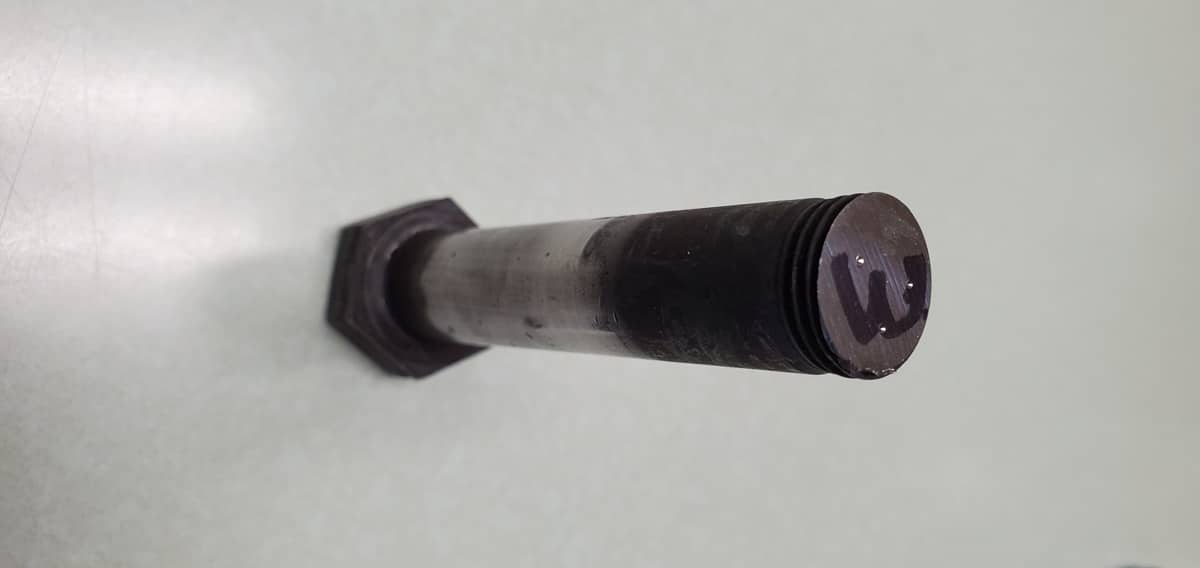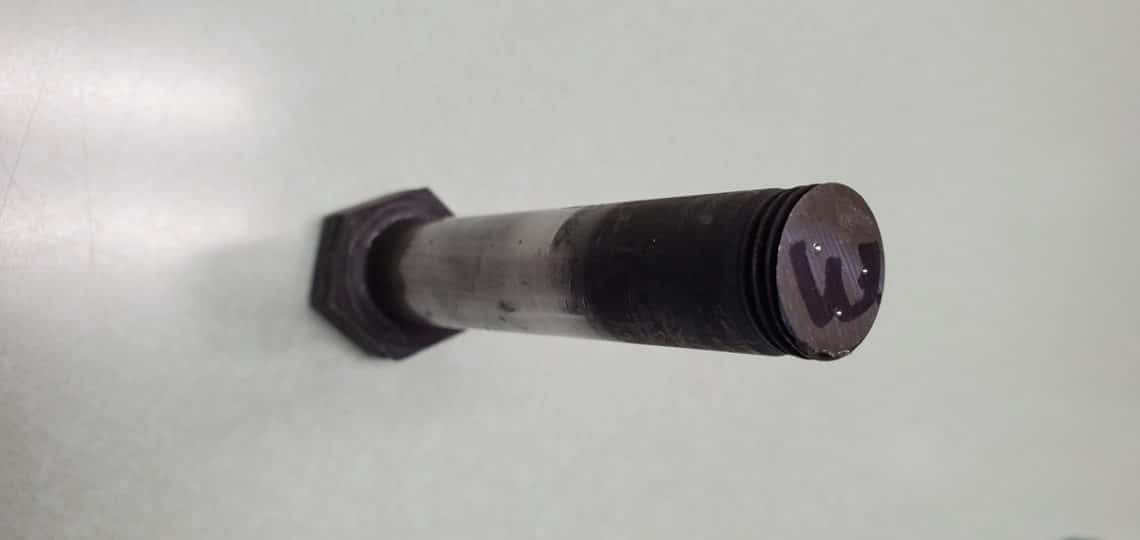The hardness of steel is a measure of the steel’s ability to resist deformation, such as abrasion and indentation, when a load is applied to the material. In this article, we will look at hardness for externally threaded screws, bolts, and studs made from alloy or carbon steel. Most fastener standards and specifications have two mechanical property requirements for hardness: core hardness and surface hardness. In general, fasteners made from carbon and alloy steel become stronger as they get harder. Specifically, as hardness increases, tensile strength also increases. (You can get more info about Tensile Strength here). Because of this relationship between hardness and strength, hardness is a critical factor for fasteners. This is why many fastener standards require hardness to be verified before parts can be considered compliant.
Core Hardness
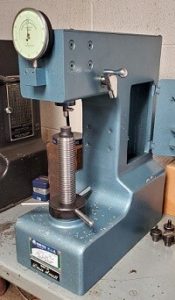
Let’s talk about core hardness first. Core hardness refers to the hardness of the material throughout the inside of the part. Core hardness testing is performed on a cross-section of the interior of the part. The part must be cut to expose the interior, so core hardness tests are destructive tests. Core hardness measurements are a quick and comprehensive way to get an accurate hardness measurement throughout the diameter of the part.
As an illustration, we will use an example part with a decent amount of material: an M16 x 1.50 Property Class (PC) 10.9 Hex Head Cap Screw. To perform the test, the lab technician first prepares the sample parts by cutting a cross-section at a minimum distance of one diameter from the end of the part. The technician then places each sample in a Rockwell hardness tester. A specified load is applied to a diamond indenter, which penetrates the sample at mid-radius. The machine measures the indentation and calculates the hardness. The machine makes multiple indentations on each sample to ensure consistent hardness throughout the part.
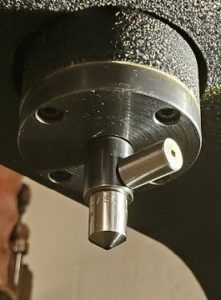
For a Property Class 10.9 part, we use measurements on the Rockwell C Scale (RC). The lab technician compares the results to specification limits to determine conformance. For our example, the sample readings were 36-37 RC. The spec sets the limits at 32-39 RC. As you can see, the readings fell within the spec limits, and the parts conform. If you want to learn more about the testing procedure, we recommend ASTM E-18 and ISO 898-1.
Core Hardness and Tensile Strength
As stated above, for the materials we use, there is a good correlation between core hardness and tensile strength. Because of this correlation, most standards base their core hardness requirements on the desired tensile strength of the parts. The standards tend to set the minimum core hardness at a value that will produce a tensile strength above the desired minimum tensile strength of the part. Likewise, maximum core hardness is set at a value that will produce a tensile strength just below the maximum acceptable tensile strength of the parts. Why have an upper limit on the hardness of a part? Some steels can become brittle when a certain hardness is exceeded, so some standards limit the hardness to below the threshold where brittleness is a concern.
Surface Hardness and Carburization
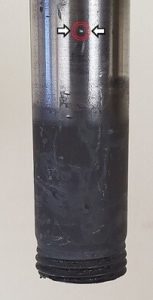
Next, let’s take a look at surface hardness. During the heat treat process, a thin layer of carburized material can develop on the surface of the part. This carburized material is harder and more brittle than the material in the rest of the part. Most specifications set a maximum surface hardness value to ensure that the surface is not brittle. Testing for surface hardness is quick and non-destructive. The lab technician performs the test on either the unthreaded shank or the head of the fastener. A sample part is placed on a Rockwell machine, and a small load is applied to the indenter. The indenter penetrates the surface and makes small indentations on the surface of the part. The machine measures the depth of the indentations and calculates the hardness.
As you can see from the picture, on our example M16 part, the indentations for a surface hardness test are much smaller than the indentations for a core hardness test. The machine makes multiple indentations on each part. The machine measures the depth of the indentations and calculates the surface hardness. The lab technician compares the results of the test to the specification maximum and determines conformance.
For our M16 example, we use measurements on the Rockwell 30N scale (R30N). Of all the measurements taken, the highest hardness result was measured at 57 R30N. The specification maximum was 58.6 R30N. Therefore, the parts are in conformance to requirements. For more information on specific test requirements, see ASTM-E18 and ISO 898.
Decarburization
Surface hardness can also be affected by another condition that can occur during the heat treatment process: decarburization. Decarburization can produce a thin soft surface layer that may reduce thread strength. Luckily, we have tests that can detect when decarburization is present. Some procurement specifications specifically require fasteners to be tested for decarburization. If you want to learn more about this testing, we recommend ASTM F2328 Class 2 optical methods.
This concludes our discussion on fastener hardness. Thanks for reading. For more information on fastener materials, check out our article on material hardenability. Here is a teaser: Hardness and hardenability are not the same things.
Need a Special Fastener?
Wilson-Garner produces small-quantity specialty bolts, screws, and studs you can’t find anywhere else. Contact Us and see what we can do for you!
RELATED: Need a specialty bolt, screw, or stud? Wilson-Garner can help.
